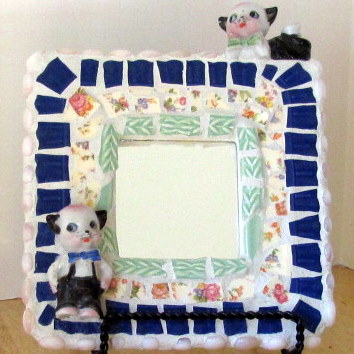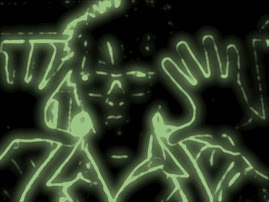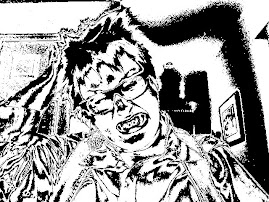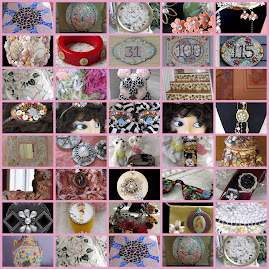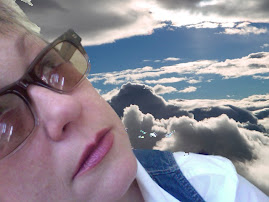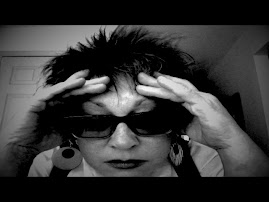What an amazing feeling is was to enter my shiny, new, clean studio with no insulation hanging down and walls and floor that would no longer produce equivalent amounts of dust as my work. The next task at hand was the lighting. Lighting is a real issue for me no matter what the purpose of the space. Partly, it is my need to see shapes and colors clearly and as vividly as possible. The other is that I have severe migraine syndrome and my eyes are more sensitive than most to light temperature, hue and most importantly, strobing.
With these considerations, I had made up my mind that track lighting with incandescent light fixtures was the way for me to go. Ikea (my beloved Ikea) makes a track that can use any one of their fixtures from large work dishes to pinpoint spot lights. My intention was to install track along the length of the room with two rows running parallel to each other. I made my pilgrimage to the Paramus Ikea only to find that they were renovating the Marketplace and the only lighting products available were light bulbs. Damn you Ikea! The no-brainer was to stop at Home Depot on the way home and see what they had to offer. There were kits with 4 standard, old fashioned looking fixtures and a 4 foot track or I could buy it all a la carte with variable lengths of track ranging from 4' to 12' and then buying any amount of fixtures I felt I needed. This was within my budget (under $200) so I began to collect what I needed only to find that there were 4 of this item but not the 10 that I needed. There was one 8' length of track in white but 10' only came in black. The frustrating reality was that I could not assemble, in one cart, all the parts I needed, in white. The question was, did I want to drive from Home Depot to Home Depot hoping that after covering a 50 mile radius I would accumulate what I needed? No way.
Back at home I began shopping online for track lighting and discovered that most track lighting has converted to halogen and in some cases LED. Halogen is very hot and does not give a good wash of light. Most importantly, anything that was recommended for illuminating galleries, the closest use to studio light that was referenced in specs, was waaaaaaaaaaaaaay out of my price range. I have a philosophy that if something doesn't come together after pushing the rock halfway up the hill, it's best to step aside and see what happens. I was beginning to feel that whether or not I knew it, this track lighting thing was not really what I was looking for.
Now a week had gone by, the space was ready to use but there was no light except for the two exposed bulbs in the ceiling. I was getting anxious (I am always on some self-imposed schedule that no one is sticking to but me. I guess that's how I get things done). Let me interject another one of my structural limitations - because the room is a raw basement there are no electricity sources except the bare light bulb fixtures. I had screwed an adapter into the ceiling socket wherein you could screw in the light bulb and have two additional outlets. That's where I plugged in my clip lights. I was determined not to call in an electrician to do any hardwiring so I Goggled on.
And it's a good thing because I got a swell little education on lighting that has enriched my life (no sarcasm here - I'm serious). I Googled "art studio lighting" and most of the information was about how to light a photographer's studio. On about page 2 or 3 I found a blog from a painter who struggled with how to light a painter's studio and had shared his exhaustive research in the post. I tip my hat to him and want him to know he saved me endless research and helped me to achieve my lighting goals. Here is the link to that blog if you want the overview that I used as my jumping off point. http://www.westerberg-fineart.com/2011/05/studio-lighting/.
Westerberg's blog provided a link to a more scientific explanition about light, explaining the whys and hows certain kinds of bulbs put out the light that they do. This is that link: http://stereopsis.com/fullspectrum/. The article from Stereopsis explains the concepts of Color Rendering Index (CRI), color temperature and Kelvin. It's not necessary to totally understand all this science but the explanation of what elements produce the light we use gives you a relative grasp of what you need to know to allow you to understand the numbering and labeling of light bulbs. (As we all switch over to CFLs this info is useful to everyone.) I arrived at the conclusion that the best way to reproduce natural daylight and artist friendly light is by using fluorescent tube lighting. (Did you hear the cartoon brakes screeching to a halt there?)
When I collected myself and read further I learned that there are newer, thinner fluorescent tubes that don't hum, flicker and turn on immediately without the expected warm up period. Better still, these thinner tubes can be used in inexpensive fixtures available at Home Depot and the like, for very little money. Even better, though they can be adapted to be hardwired, fluorescent light fixtures come with a cord and a plug. All I needed to do was hang them up from the beams and plug 'em in. Woohoo! I chose a different style fixture thanWesterberg. I selected an industrial, shiny fixture both because I liked how they looked and I felt that the shiny surface would give me just a little more light splash. The were about $35 a piece.
My fixture uses T8 tubes (explanation @ Stereopsis) and the particular bulb recommended for full spectrum light is not available at Home Depot or Lowes. They can be purchased on Amazon but I found a store in Manhattan called Just Bulbs (http://www.justbulbsnyc.com/Home.html) and I'm pretty sure they have any light bulb ever made. They also have curbside pick up service (wow! in NYC) and take orders over the phone or by email. I ordered my 8- Phillips TL950's over the phone and they were delivered to my home in 2 days. Let me add another note here. When I bought the light fixtures I bought a couple of bulbs that were T8 tubes with a Kelvin similar to the more expensive Phillips bulbs to see if they were the same or at least similar enough. They absolutely were not. The difference, using a white sheet of paper was significant. Though the Phillips bulbs were nearly $10 apiece, they were worth it and I won't be replacing them for several years. The cords from the fluorescent fixtures plug into the into the light bulb outlets and I am more than pleased with the results. I love that each fixture has it's own pull chain and I choose to turn them all off independently and use the wall switch to turn on and off the incandescent bulbs. My husband keeps trying to get me to shorten the pull chains on the lights so they don't dangle down at face level but I refuse. I don't know. There is something about having those ball chains hanging down around the room that charms me. Maybe they look like room jewelry to me. I don't mind walking into them and love how it feels when I pull the chains down to turn them off.

Finally, there were the bare bulbs and what to do with them both functionally and more importantly, cosmetically. I found these down shades for more money than I wanted to spend but for the affect and the time I saved by not searching for the perfect thing, I really like them. Yes, there are black cords running along my imperfect fabric ceiling but I don't care. Know why? 'Cause I can see! I also don't seem to have any adverse reaction to the fluorescent tubes.
Light is both functional and an concept in human life. We need light to see what we are doing - our work, reading, watching and performing the most mundane tasks. Illumination is critical now that we don't live with the rhythms of the sun. We also speak of light as it pertains to what lives withing all of us. We put things "in the light" both physically and metaphysically. We bring it into the light to see what "it" is or to resolve a long lingering problem. We shine our light on what is in the dark and what is dark within us. Though lighting has been important to me as someone from the theatre and now an artist, I have never taken the initiative to try to understand how many different kinds of light there are and what their differences are. Knowing more about light than I did before gives me more spectrums through which to see things in my life. I encourage you to know your light better.
Before there was light
After light
Next week: The End...or Just the Beginning





























